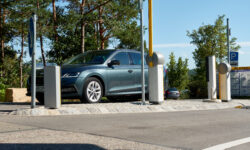Clearing Up Smoke Detector Misconceptions
Smoke detector installation seems to be a simple application. However, organizations such as the NFPA and UL have taken considerable time and money to document the important rules for fire-safety and protection. You must do the same.

(Image Credit: ronstik/stock.adobe.com)
This month I am going talk about something that is very near and dear to my heart, and that is smoke detection. In fact, it is one of the technologies that got me hooked on security.
It is one of those technologies that MUST be understood. If it is not applied correctly, lives could be lost. It is important that serious professional security techs and dealers, no matter how small, study carefully.
Smoke detector installation seems to be a simple application. Just put the detector up on the wall and the smoke will rise and find it. Over the years, organizations such as the National Fire Protection Association (NFPA) and Underwriters Lab (UL) have taken considerable time and money to document the important rules for fire-safety and protection. You must do the same.
Let’s start out with what I call the smoke detector bible, and that is NFPA 72 — National Fire Alarm Signaling Code. You can either purchase or read online for FREE the complete standard at the NFPA website. If you want to know what is expected in the performance of a smoke detector, then reference UL 217 — Standard for Safety — Smoke Alarms.
Another good reference source is the NFPA Publications and Media page. NFPA also has a blog called NFPA Today.
A Tech Talk trivia question: Many homeowners often complain that the only time a battery smoke detector’s low battery audible tone goes off is in the middle of night. What causes this very annoying phenomenon? The answer later.
Let’s get back to some important smoke detector basics. Did you know there are basically three types of smoke detection technologies? They are ionization, photoelectric and a combination of both. There is also a fourth, which I will comment on later.
Ionization smoke detectors use a radioisotope, typically americuim-241, to ionize air. This detects a difference due to the smoke and an alarm is generated. It is a popular device due to its low cost. This detector is more sensitive to the flaming stages of fires.
Photoelectric smoke detectors use an LED light source in a dark chamber to detect when particles of smoke are present. These detectors are more sensitive to smoldering fires. They cause less false alarms than ionization.
The combination of ionization and photoelectric in one smoke detector is the best of both worlds. Ionization smoke detection is more sensitive to flames and less to smoke. Photoelectric detection is more sensitive to smoldering fires and less to flames. Having both detection technologies is a win-win.
Some time ago, I commented that I feel eventually the only area alarm sensor would be a smart camera. This is becoming truer with camera systems that have edge analytics for detecting smoke. This can be found today in such systems as AI-Smoke from Mobotix, and the AVIOTEC IP Starlight 8000 camera from Bosch.
These systems can cover a large area with minimal equipment commitment. It can take time for smoke to be detected in a large warehouse with standard elevated smoke detection. A smart camera can often detect the smoke much sooner and closer to the fire source.
Getting back to NFPA fire code for a moment. I have noticed from online photos that many still don’t know about or understand the nuances of smoke detector installation. One would think that the higher up on a wall the better the detection. This is not the case.
There is an area of about four inches from the ceiling that is known as dead air space. Pressure can build up in this area when smoke is traveling and can miss the detector. On the other hand, it should be placed within 12 inches from the ceiling.
In alarm installations, many techs are used to using small 20-22 gauge cable and beanies to splice. Be warned, fire inspectors often like to see 18 gauge or larger cable and wire nuts per UL. Check with your Authority Having Jurisdiction (AHJ) and plan accordingly.
I hope many of you read Shane Clary’s monthly Fire Side Chat columns. Recently, he wrote about some NPFA 72 changes that I’d like to highlight. NFPA Chapter 14 has a new section that allows inspectors or technicians to comment on corrections, improvements or enhancements to the system.
The use of yellow tags for noting deficiencies and red tags for parts of system that are found to be inoperable or impaired. Chapter 10 now requires batteries be marked with date of manufacture and replacement dates.
And now for your trivia answer: The cold from the night causes the batteries that were about to signal a low battery to trigger.

Tool of the Month
This month I have selected the X-Sense SC07-W Combination Smoke and Carbon Monoxide Detector from X-Sense.
This product is a good example of the evolution of smart detectors. X-Sense has models that can wirelessly network, auto-check and report alarms.
If you enjoyed this article and want to receive more valuable industry content like this, click here to sign up for our FREE digital newsletters!

Security Is Our Business, Too
For professionals who recommend, buy and install all types of electronic security equipment, a free subscription to Commercial Integrator + Security Sales & Integration is like having a consultant on call. You’ll find an ideal balance of technology and business coverage, with installation tips and techniques for products and updates on how to add to your bottom line.
A FREE subscription to the top resource for security and integration industry will prove to be invaluable.








